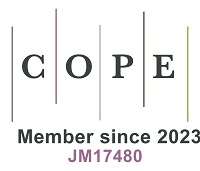REFERENCES
1. Janzen H. Carbon cycling in earth systems—a soil science perspective. Agric Ecosyst Environ 2004;104:399-417.
2. Scharlemann JP, Tanner EV, Hiederer R, Kapos V. Global soil carbon: understanding and managing the largest terrestrial carbon pool. Carbon Manag 2014;5:81-91.
3. Shi Z, Allison SD, He Y, et al. The age distribution of global soil carbon inferred from radiocarbon measurements. Nat Geosci 2020;13:555-9.
4. Grunwald S, Thompson JA, Boettinger JL. Digital soil mapping and modeling at continental scales: finding solutions for global issues. Soil Sci Soc Am J 2011;75:1201-13.
5. James J, Devine W, Harrison R, Terry T. Deep soil carbon: quantification and modeling in subsurface layers. Soil Sci Soc Am J 2014;78:S1-S10.
6. Koarashi J, Hockaday WC, Masiello CA, Trumbore SE. Dynamics of decadally cycling carbon in subsurface soils. J Geophys Res 2012;117:G03033.
7. Vasques G, Grunwald S, Comerford N, Sickman J. Regional modelling of soil carbon at multiple depths within a subtropical watershed. Geoderma 2010;156:326-36.
8. Rogelj J, den Elzen M, Höhne N, et al. Paris agreement climate proposals need a boost to keep warming well below 2 °C. Nature 2016;534:631-9.
9. Paustian K, Lehmann J, Ogle S, Reay D, Robertson GP, Smith P. Climate-smart soils. Nature 2016;532:49-57.
10. Rumpel C, Amiraslani F, Chenu C, et al. The 4p1000 initiative: opportunities, limitations and challenges for implementing soil organic carbon sequestration as a sustainable development strategy. Ambio 2020;49:350-60.
11. Smith P, Clark H, Dong H. Agriculture, forestry and other land use (AFOLU). In: Krug T, Nabuurs GJ, editors. Climate change 2014: mitigation of climate change. Cambridge: Cambridge University Press; 2014. p. 813-922.
12. Six J, Ogle SM, Jay breidt F, Conant RT, Mosier AR, Paustian K. The potential to mitigate global warming with no-tillage management is only realized when practised in the long term. Glob Chang Biol 2004;10:155-60.
13. Sun W, Canadell JG, Yu L, et al. Climate drives global soil carbon sequestration and crop yield changes under conservation agriculture. Glob Chang Biol 2020;26:3325-35.
14. Lal R. Soil carbon stocks under present and future climate with specific reference to European ecoregions. Nutr Cycl Agroecosyst 2008;81:113-27.
15. Smith P, Martino D, Cai Z, et al. Greenhouse gas mitigation in agriculture. Philos Trans R Soc Lond B Biol Sci 2008;363:789-813.
16. Stockmann U, Adams MA, Crawford JW, et al. The knowns, known unknowns and unknowns of sequestration of soil organic carbon. Agric Ecosyst Environ 2013;164:80-99.
17. Ogle SM, Alsaker C, Baldock J, et al. Climate and soil characteristics determine where no-till management can store carbon in soils and mitigate greenhouse gas emissions. Sci Rep 2019;9:11665.
18. Nicoloso RS, Rice CW. Intensification of no-till agricultural systems: an opportunity for carbon sequestration. Soil Sci Soc Am j 2021;85:1395-409.
20. White RE, Davidson B, Lam SK, Chen D. A critique of the paper ‘soil carbon 4 per mille’ by Minasny et al. (2017). Geoderma 2018;309:115-7.
21. de Vries W. Soil carbon 4 per mille: a good initiative but let’s manage not only the soil but also the expectations. Geoderma 2018;309:111-2.
22. Poulton P, Johnston J, Macdonald A, White R, Powlson D. Major limitations to achieving “4 per 1000” increases in soil organic carbon stock in temperate regions: evidence from long-term experiments at Rothamsted Research, United Kingdom. Glob Chang Biol 2018;24:2563-84.
23. van Groenigen JM, van Kessel C, Hungate BA, Oenema O, Powlson DS, van Groenigen KJ. Sequestering soil organic carbon: a nitrogen dilemma. Environ Sci Technol 2017;51:4738-9.
24. Baveye PC, Berthelin J, Tessier D, Lemaire G. The “4 per 1000” initiative: a credibility issue for the soil science community? Geoderma 2018;309:118-23.
25. Russell S, Norvig P. Artificial intelligence: a modern approach. Available from: https://storage.googleapis.com/pub-tools-public-publication-data/pdf/27702.pdf [Last accessed on 12 Apr 2022].
27. LeCun Y, Bengio Y. Convolutional networks for images, speech, and time series. The handbook of brain theory and neural networks. Cambridge: MIT Press; 1995.
29. Khaledian Y, Miller BA. Selecting appropriate machine learning methods for digital soil mapping. Appl Math Model 2020;81:401-18.
30. Padarian J, Minasny B, Mcbratney AB. Using deep learning for digital soil mapping. Soil 2019;5:79-89.
31. Kamilaris A, Prenafeta-boldú FX. Deep learning in agriculture: a survey. Comput Electron Agric 2018;147:70-90.
32. Diaz-Gonzalez FA, Vuelvas J, Correa CA, Vallejo VE, Patino D. Machine learning and remote sensing techniques applied to estimate soil indicators - review. Ecol Indic 2022;135:108517.
34. Ma Y, Minasny B, Malone BP, Mcbratney AB. Pedology and digital soil mapping (DSM). Eur J Soil Sci 2018;70:216-35.
35. Thompson JA, Roecker SM, Grunwald S, Owens PR. Digital soil mapping: Interactions with and applications for hydropedology. In: Lin HS, Editor. Hydropedology - synergistic integration of Pedology and Hydrology. Cambridge: Academic Press; 2012. p. 665-709.
37. Xiong X, Grunwald S, Myers DB, Kim J, Harris WG, Comerford NB. Holistic environmental soil-landscape modeling of soil organic carbon. Environ Model Softw 2014;57:202-15.
38. Breiman L. Classification and regression trees. London: Chapman & Hall; 1984.
39. Prasad AM, Iverson LR, Liaw A. Newer classification and regression tree techniques: bagging and random forests for ecological prediction. Ecosystems 2006;9:181-99.
41. Hastie T, Tibshirani R, Friedman J. The elements of statistical learning. New York: Springer; 2009.
42. Efron B, Tibshirani R. An introduction to the bootstrap: monographs on statistics and applied probability. London: Chapman & Hall; 1993.
43. Freund Y, Schapire RE. Experiments with a new boosting algorithm. 13th International Conference on Machine Learning; 1996 Jan 22; Murray Hill. 1996. p. 148-56.
44. Friedman JH. Greedy function approximation: a gradient boosting machine. Ann Stat 2001;29:1189-232.
45. Lawrence R. Classification of remotely sensed imagery using stochastic gradient boosting as a refinement of classification tree analysis. Remote Sens Environ 2004;90:331-6.
47. Cutler A, Cutler DR, Stevens JR, Zhang C, Ma Y. Ensemble machine learning: methods and applications. Chicago: Media LLC; 2012.
48. Svetnik V, Liaw A, Tong C, Culberson JC, Sheridan RP, Feuston BP. Random forest: a classification and regression tool for compound classification and QSAR modeling. J Chem Inf Comput Sci 2003;43:1947-58.
49. Meinshausen N, Ridgeway G. Quantile regression forests. J Mach Learn Res 2006;7:983-99.
52. Williams G. Data mining with rattle and R: the art of excavating data for knowledge discovery. New York: Springer; 2011.
53. Somarathna P, Malone B, Minasny B. Mapping soil organic carbon content over New South Wales, Australia using local regression kriging. Geoderma Reg 2016;7:38-48.
54. Wold H. Soft modelling by latent variables: the non-linear iterative partial least squares (NIPALS) approach. J Appl Probab 1975;12:117-42.
55. Garthwaite PH. An interpretation of partial least squares. J Am Stat Assoc 1994;89:122-7.
56. Carrascal LM, Galván I, Gordo O. Partial least squares regression as an alternative to current regression methods used in ecology. Oikos 2009;118:681-90.
57. Tobias RD. An introduction to partial least squares regression. Proceedings of the Twentieth Annual SAS Users Group International Conference; Cary: SAS Institute Inc; 1995. p. 1250-7.
58. Quinlan JR. Programs for machine learning. Burlington: Morgan Kaufmannn; 1993.
59. Haykin S. Neural networks: a comprehensive foundation. Hoboken: Prentice Hall; 1999.
60. Hecht-Nielsen R. Theory of the Backpropagation Neural Network*. In: Wechsler H, editor. Neural Networks for Perception. Elsevier; 1992. p. 65-93.
61. Wythoff BJ. Backpropagation neural networks: a tutorial. Chemometr Intell Lab Syst 1993;18:115-55.
62. Bellon-Maurel V, Fernandez-Ahumada E, Palagos B, Roger J, Mcbratney A. Critical review of chemometric indicators commonly used for assessing the quality of the prediction of soil attributes by NIR spectroscopy. Trends Analyt Chem 2010;29:1073-81.
64. Williams PC. Variables affecting near-infrared reflectance spectroscopic analysis. Near-infrared technology in the agriculture and food industries. Eagan: American Association of Cereal Chemists; 1987. p. 143-67.
65. Chang C, Laird DA, Mausbach MJ, Hurburgh CR. Near-infrared reflectance spectroscopy-principal components regression analyses of soil properties. Soil Sci Soc Am J 2001;65:480-90.
66. Adi SH, Grunwald S. Integrative environmental modeling of soil carbon fractions based on a new latent variable model approach. Sci Total Environ 2020;711:134566.
67. Peng Y, Xiong X, Adhikari K, Knadel M, Grunwald S, Greve MH. Modeling soil organic carbon at regional scale by combining multi-spectral images with laboratory spectra. PLoS One 2015;10:e0142295.
68. Ross CW, Grunwald S, Vogel JG, et al. Accounting for two-billion tons of stabilized soil carbon. Sci Total Environ 2020;703:134615.
69. Keskin H, Grunwald S, Harris WG. Digital mapping of soil carbon fractions with machine learning. Geoderma 2019;339:40-58.
70. Martin MP, Wattenbach M, Smith P, et al. Spatial distribution of soil organic carbon stocks in France. Biogeosciences 2011;8:1053-65.
71. Were K, Bui DT, Dick ØB, Singh BR. A comparative assessment of support vector regression, artificial neural networks, and random forests for predicting and mapping soil organic carbon stocks across an Afromontane landscape. Ecol Indic 2015;52:394-403.
72. Deng X, Chen X, Ma W, et al. Baseline map of organic carbon stock in farmland topsoil in East China. Agric Ecosyst Environ 2018;254:213-23.
73. Viscarra Rossel RA, Chen C, Grundy MJ, Searle R, Clifford D, Campbell PH, et al. The Australian three-dimensional soil grid: Australia’s contribution to the GlobalSoilMap project. Soil Res 2015;53:845.
74. Hengl T, Mendes de Jesus J, Heuvelink GB, et al. SoilGrids250m: Global gridded soil information based on machine learning. PLoS One 2017;12:e0169748.
75. Cao B, Domke GM, Russell MB, Walters BF. Spatial modeling of litter and soil carbon stocks on forest land in the conterminous United States. Sci Total Environ 2019;654:94-106.
76. Sothe C, Gonsamo A, Arabian J, Snider J. Large scale mapping of soil organic carbon concentration with 3D machine learning and satellite observations. Geoderma 2022;405:115402.
77. Wang B, Waters C, Orgill S, et al. Estimating soil organic carbon stocks using different modelling techniques in the semi-arid rangelands of eastern Australia. Ecol Indic 2018;88:425-38.
78. Heuvelink GBM, Angelini ME, Poggio L, et al. Machine learning in space and time for modelling soil organic carbon change. Eur J Soil Sci 2021;72:1607-23.
79. Guevara M, Olmedo GF, Stell E, et al. No silver bullet for digital soil mapping: country-specific soil organic carbon estimates across Latin America. Soil 2018;4:173-93.
80. Poggio L, de Sousa LM, Batjes NH, et al. SoilGrids 2.0: producing soil information for the globe with quantified spatial uncertainty. Soil 2021;7:217-40.
82. Köchy M, Don A, van der Molen MK, Freibauer A. Global distribution of soil organic carbon, based on the Harmonized World Soil Database-Part 2: Certainty of changes related to land-use and climate. Soil Discussions 2014;1:363-400.
83. Le Quéré C, Moriarty R, Andrew RM, et al. Global carbon budget 2014. Earth Syst Sci Data 2015;7:47-85.
84. Batjes NH. Technologically achievable soil organic carbon sequestration in world croplands and grasslands. Land Degrad Dev 2019;30:25-32.
85. Haaf D, Six J, Doetterl S. Global patterns of geo-ecological controls on the response of soil respiration to warming. Nat Clim Chang 2021;11:623-7.
86. Kirschbaum M. The temperature dependence of organic-matter decomposition—still a topic of debate. Soil Biol Biochem 2006;38:2510-8.
87. Bond-Lamberty B, Thomson A. A global database of soil respiration data. Biogeosciences 2010;7:1915-26.
88. Bond-Lamberty B. New techniques and data for understanding the global soil respiration flux. Earth’s Future 2018;6:1176-80.
89. Lu H, Li S, Ma M, et al. Comparing machine learning-derived global estimates of soil respiration and its components with those from terrestrial ecosystem models. Environ Res Lett 2021;16:054048.
90. Huang N, Wang L, Song XP, et al. Spatial and temporal variations in global soil respiration and their relationships with climate and land cover. Sci Adv 2020;6:eabb8508.
91. Bond-Lamberty B, Thomson A. Temperature-associated increases in the global soil respiration record. Nature 2010;464:579-82.
92. Hashimoto S, Carvalhais N, Ito A, Migliavacca M, Nishina K, Reichstein M. Global spatiotemporal distribution of soil respiration modeled using a global database. Biogeosciences 2015;12:4121-32.
93. Xu M, Shang H. Contribution of soil respiration to the global carbon equation. J Plant Physiol 2016;203:16-28.
94. Warner DL, Bond-lamberty B, Jian J, Stell E, Vargas R. Spatial predictions and associated uncertainty of annual soil respiration at the global scale. Global Biogeochem Cycles 2019;33:1733-45.
95. Stell E, Warner D, Jian J, Bond-Lamberty B, Vargas R. Spatial biases of information influence global estimates of soil respiration: how can we improve global predictions? Glob Chang Biol 2021;27:3923-38.
96. Yao Y, Ciais P, Viovy N, et al. A data-driven global soil heterotrophic respiration dataset and the drivers of its inter-annual variability. Global Biogeochem Cycles 2021:35.
97. Jian J, Vargas R, Anderson-teixeira K, et al. A restructured and updated global soil respiration database (SRDB-V5). Earth Syst Sci Data 2021;13:255-67.
98. Jian J, Steele MK, Thomas RQ, Day SD, Hodges SC. Constraining estimates of global soil respiration by quantifying sources of variability. Glob Chang Biol 2018;24:4143-59.
99. Viscarra Rossel R, Behrens T, Ben-dor E, et al. A global spectral library to characterize the world’s soil. Earth Sci Rev 2016;155:198-230.
100. Knox NM, Grunwald S. Total soil carbon assessment: linking field, lab, and landscape through VNIR modelling. Landscape Ecol 2018;33:2137-52.
101. Clingensmith CM, Grunwald S, Wani SP. Evaluation of calibration subsetting and new chemometric methods on the spectral prediction of key soil properties in a data-limited environment. Eur J Soil Sci 2019;70:107-26.
102. Moura-Bueno JM, Dalmolin RSD, Horst-Heinen TZ, Grunwald S, ten Caten A. Environmental covariates improve the spectral predictions of organic carbon in subtropical soils in southern Brazil. Geoderma 2021;393:114981.
103. Shi Z, Wang Q, Peng J, et al. Development of a national VNIR soil-spectral library for soil classification and prediction of organic matter concentrations. Sci China Earth Sci 2014;57:1671-80.
104. Wadoux AMJ, Samuel-Rosa A, Poggio L, Mulder VL. A note on knowledge discovery and machine learning in digital soil mapping. Eur J Soil Sci 2020;71:133-6.
105. Liao SM. Ethics of artificial intelligence. Oxford: Oxford University Press; 2020.
106. Guyon I, Weston J, Barnhill S, Vapnik V. Gene selection for cancer classification using support vector machines. Mach Learn 2002;46:389-422.
108. Nilson R, Pena JM, Björkegren J, Tegnér J. Consistent feature selection for pattern recognition in polynomial time. J Mach Learn Res 2007;8:589-612.
109. Xie Z, Xu Y. Sparse group LASSO based uncertain feature selection. Int J Mach Learn & Cyber 2014;5:201-10.
110. Taghizadeh-Mehrjardi R, Schmidt K, Amirian-Chakan A, et al. Improving the spatial prediction of soil organic carbon content in two contrasting climatic regions by stacking machine learning models and rescanning covariate space. Remote Sens 2020;12:1095.
111. Zhao Z, Peng C, Yang Q, et al. Model prediction of biome-specific global soil respiration from 1960 to 2012. Earth’s Future 2017;5:715-29.
112. Grunwald S, Mizuta K, Ceddia MB, et al. The meta soil model: an integrative multi-model framework for soil security. In: Field DJ, Morgan CLS, McBratney AB, editors. Global soil security. London: Springer Nature Publ.; 2017. p. 305-18.
113. Ng W, Minasny B, Montazerolghaem M, et al. Convolutional neural network for simultaneous prediction of several soil properties using visible/near-infrared, mid-infrared, and their combined spectra. Geoderma 2019;352:251-67.
114. Chalmers DJ. Reality+: virtual worlds and the problem of philosophy. New York: W.W. Norton & Company; 2022.
115. Mitchell M. Artificial intelligence: a guide for thinking humans. New York: Farrar, Straus and Giroux; 2019.
116. Baudrillard J. Simulacra and simulation. Ann Arbor: University of Michigan Press; 1994.








